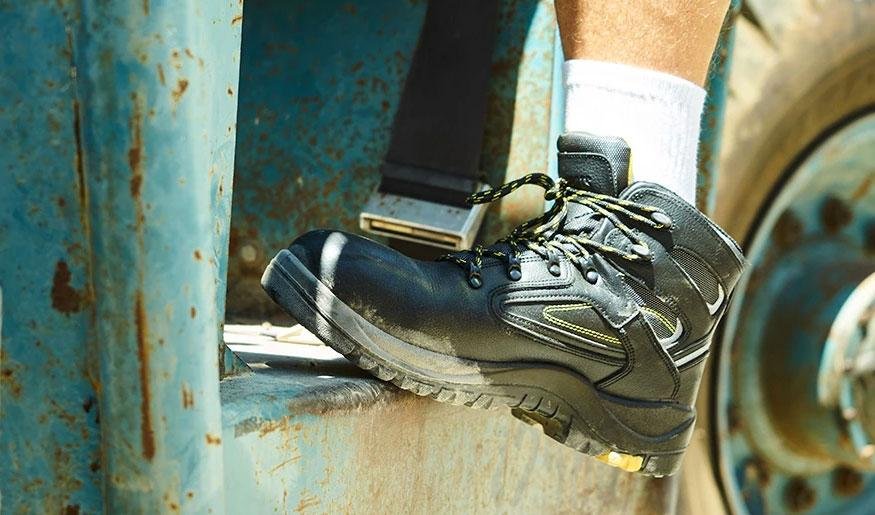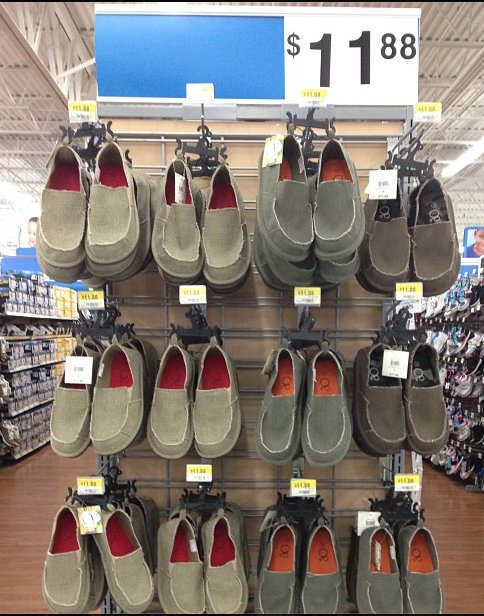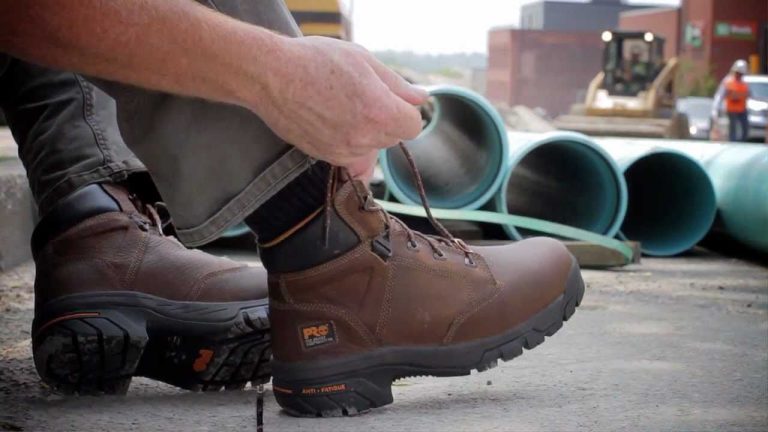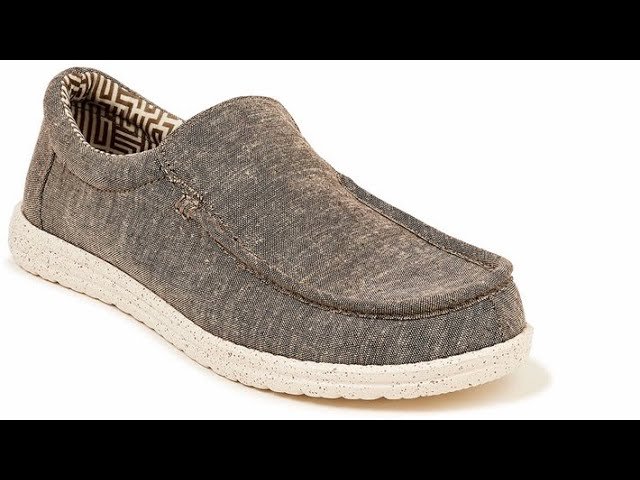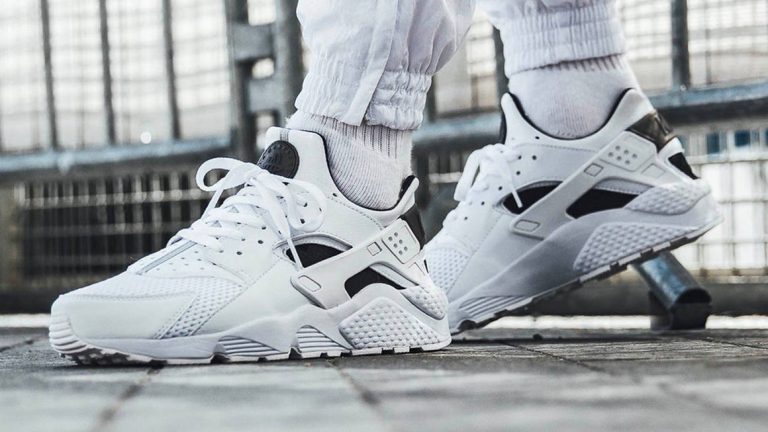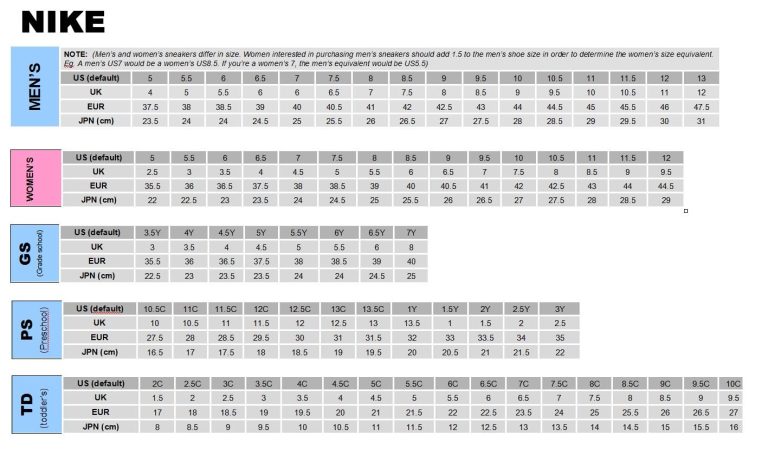Steel toe boots are an essential piece of protective gear for many workers across various industries. When it comes to purchasing a new pair, one of the questions that often arises is, “How much does steel toe boots weigh?” Well, the weight of steel toe boots can vary depending on the brand, style, and size you choose. In this article, we’ll delve into the factors that contribute to the weight of steel toe boots and provide some insight into finding the right balance between protection and comfort. So, let’s dive in and explore just how much steel toe boots weigh!
How Much Do Steel Toe Boots Weigh?
Steel toe boots are popular among workers who require protection for their feet in hazardous work environments. These boots are designed to provide safety and comfort while ensuring durability. One factor that workers often consider when choosing steel toe boots is their weight. The weight of the boots can impact the wearer’s mobility and overall comfort throughout the workday. In this article, we will explore the various factors that influence the weight of steel toe boots and provide insights into the average weights of different types of boots.
1. Understanding the Construction of Steel Toe Boots
Before delving into the weight of steel toe boots, it’s essential to understand their construction. Steel toe boots are made up of several components, including the upper, outsole, midsole, and toe cap. Each of these components contributes to the overall weight of the boots. Let’s take a closer look at each part.
1.1 The Upper
The upper of steel toe boots is typically made of leather or synthetic materials. Leather uppers are known for their durability and resistance to wear and tear. On the other hand, synthetic uppers offer flexibility, breathability, and reduced weight. The material used for the upper can influence the overall weight of the boots.
1.2 The Outsole
The outsole is the bottom part of the boot that comes into contact with the ground. It is usually made of rubber or other durable materials. While the outsole is responsible for providing traction and protecting the wearer from slips, it can also add weight to the boots.
1.3 The Midsole
The midsole sits between the outsole and the insole of the boots. It acts as a buffer, cushioning the wearer’s foot against impacts from the ground. Midsoles are commonly made of various materials such as EVA (ethylene-vinyl acetate) or polyurethane. The choice of midsole material can affect the weight and comfort of the boots.
1.4 The Toe Cap
The most distinguishing feature of steel toe boots is the protective toe cap. Traditionally, steel was used for toe caps. However, modern designs now incorporate composite materials such as fiberglass or carbon fiber, which are lighter while still offering excellent protection. The type of toe cap material can impact the weight of the boots.
2. Factors Affecting the Weight of Steel Toe Boots
Several factors contribute to the weight of steel toe boots. By considering these factors, workers can choose boots that meet their specific needs. Let’s explore these factors in detail.
2.1 Material Selection
The choice of materials used in the construction of steel toe boots significantly impacts their weight. As mentioned earlier, leather uppers tend to be heavier than synthetic materials. Similarly, rubber outsoles can be heavier compared to other materials such as rubber compounds or lightweight synthetic alternatives.
2.2 Boot Style and Design
Different boot styles have varying weights due to their construction and design features. For example, heavy-duty work boots with additional layers of insulation or specialized features may weigh more than lightweight boots designed for less demanding environments. The style and intended use of the boots can influence their weight.
2.3 Boot Size
The size of the boots also contributes to their weight. Larger boot sizes may have more material and components, making them slightly heavier than smaller sizes. It is important for workers to consider the weight implications when selecting the appropriate size for their feet.
2.4 Safety Ratings and Compliance
Steel toe boots are subject to safety standards and regulations set by occupational health and safety authorities. These standards ensure that the boots provide adequate protection to workers. Compliance with safety standards may necessitate additional reinforcement or materials, which can increase the overall weight of the boots.
3. Average Weights of Steel Toe Boots
While the weight of steel toe boots can vary depending on the factors mentioned above, it is helpful to have a general idea of what to expect in terms of weight. Here are some average weights for common types of steel toe boots:
3.1 Heavy-Duty Work Boots
Heavy-duty work boots, designed for construction, manufacturing, or industrial settings, tend to be on the heavier side due to their robust construction. On average, these boots can weigh between 4 and 6 pounds (1.8 to 2.7 kilograms) per pair.
3.2 Midweight Work Boots
Midweight work boots strike a balance between protection and comfort. These boots are suitable for workers in various industries, including warehousing, logistics, and light construction. Their average weight ranges from 3 to 4 pounds (1.4 to 1.8 kilograms) per pair.
3.3 Lightweight Work Boots
Lightweight work boots prioritize mobility and flexibility, making them ideal for professions that require agility, such as landscaping or maintenance. These boots typically weigh between 2.5 and 3 pounds (1.1 to 1.4 kilograms) per pair.
3.4 Athletic-Inspired Safety Shoes
Athletic-inspired safety shoes provide the protection of steel toe boots while resembling athletic sneakers. These shoes are popular among workers in the service industry or those who require a more casual appearance. On average, they weigh between 1.5 and 2.5 pounds (0.7 to 1.1 kilograms) per pair.
4. Considerations When Choosing Steel Toe Boots
When selecting steel toe boots, it is crucial to consider the weight along with other critical factors. Here are some additional considerations:
4.1 Comfort and Fit
Ensure that the boots fit well and provide adequate support for your feet. A good fit will enhance comfort and reduce strain, even if the boots are slightly heavier.
4.2 Job Requirements
Evaluate the demands of your job and select boots that meet the necessary safety standards and provide the required protection. Sometimes, a slightly heavier boot may be necessary for specific hazardous environments.
4.3 Durability and Longevity
Consider the durability and longevity of the boots. Investing in high-quality boots that last longer can be more cost-effective than purchasing multiple pairs in a shorter time frame.
4.4 Weight Distribution and Balance
Pay attention to the weight distribution and balance of the boots. Proper weight distribution can help prevent discomfort or fatigue during prolonged use.
5. Conclusion
The weight of steel toe boots is an important factor to consider when choosing the right pair for your work environment. While heavy-duty boots may provide more protection, they may also be heavier and potentially affect mobility. It is essential to strike a balance between safety, comfort, and job requirements. By understanding the construction of steel toe boots and the factors that influence their weight, workers can make informed decisions to ensure they have the appropriate footwear for their needs.
Best Steel Toe Work Shoes… Also WTF are they? (Red Wings vs Thorogood)
Frequently Asked Questions
How much do steel toe boots weigh?
The weight of steel toe boots can vary depending on the size and style of the boot. On average, a pair of steel toe boots can weigh between 3 to 5 pounds (1.4 to 2.3 kilograms). However, this weight may increase if the boots have additional features like insulation or waterproofing. It is worth noting that the weight of the boots can also impact comfort and mobility, so it’s important to find a pair that suits your needs.
Are steel toe boots heavier than regular boots?
Yes, steel toe boots are generally heavier than regular boots due to the added steel toe cap. This additional feature is designed to protect the feet from impact and compression hazards, but it does add weight to the overall boot. However, advancements in technology have led to the development of lighter steel toe boots that provide the same level of protection while reducing the weight.
Do all steel toe boots weigh the same?
No, all steel toe boots do not weigh the same. The weight of steel toe boots can vary based on factors such as the size, materials used, and design of the boot. Some manufacturers may also focus on creating lighter weight options to improve comfort and reduce fatigue for the wearer. It’s recommended to try on different pairs to find the one that is the most comfortable and fits your specific needs.
Why is the weight of steel toe boots important?
The weight of steel toe boots is important because it can impact comfort and mobility. Wearing heavy boots for extended periods can cause fatigue and discomfort, especially when walking or standing for long hours. It’s essential to find a pair of steel toe boots that strike a balance between providing adequate protection and being lightweight enough to ensure comfort and ease of movement.
Are there any lightweight steel toe boot options available?
Yes, there are lightweight steel toe boot options available in the market. Manufacturers have been developing innovative materials and designs to reduce the overall weight of steel toe boots, without compromising on safety and protection. These lightweight options are ideal for individuals who require the added safety of steel toe boots but prefer a lighter and more comfortable footwear option.
Final Thoughts
Steel toe boots are a popular choice for individuals who require safety footwear in their work environment. When it comes to determining the weight of steel toe boots, it can vary depending on the specific brand, style, and size. On average, steel toe boots can weigh between 2 to 4 pounds. The weight of steel toe boots is an important factor to consider, as it can impact comfort and overall performance. Properly fitting boots that are not excessively heavy can enhance mobility and reduce fatigue, allowing workers to focus on their tasks without compromising safety. So, if you’re in the market for steel toe boots, make sure to check the weight to find the right balance between protection and comfort.
